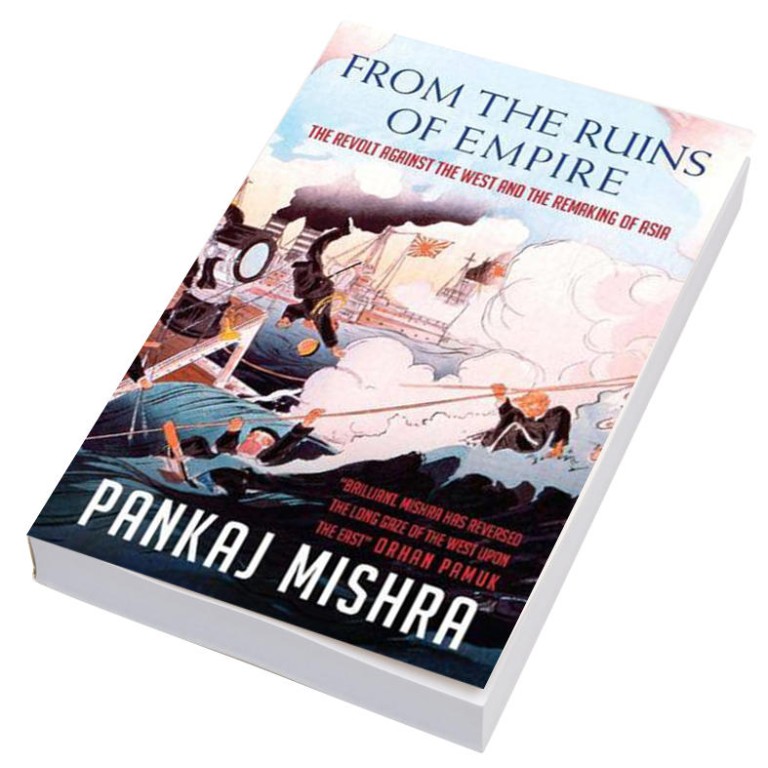
The day Japan became the rising sun for colonised East
Pankaj Mishra was in the news last year over a literary spat with British historian Niall Ferguson that threatened, momentarily, to overshadow the feud between Gabriel Garcia Marquez and Mario Vargas Llosa - one that had featured a bloody punch.
by Pankaj Mishra
Random House
Pankaj Mishra was in the news last year over a literary spat with British historian Niall Ferguson that threatened, momentarily, to overshadow the feud between Gabriel Garcia Marquez and Mario Vargas Llosa - one that had featured a bloody punch.
The gripe? In his review of Ferguson's latest book, , for the , Mishra called the historian a "homo atlanticus redux" who was a "retailer of emollient tales about the glorious past". Ferguson accused Mishra of character assassination and calling him a racist.
Mishra's new book, , which examines the response of the colonised East to Western hegemony, is drawing its share of criticism. It challenges the Western view of the Victorian era as a time of self-confident progress and presents a contrapuntal account that ranges from the Ottomans to late Qing China, from Egypt to the Middle Kingdom via India, of how the Muslim world, India and China are remaking themselves in their own image.
Mishra has examined post-colonialism before in his travelogue, , a document of the tussle between Western-style modernity and the traditional cultures of South Asia, and looks at how these countries' current socio-economic selves are a response to years of subjugation by the West. The narrative opens in 1905 with the Battle of Tsushima in which a small Japanese fleet "annihilated much of the Russian navy, which had sailed halfway round the world to reach the Far East. Described by the German Kaiser as the most important naval battle since Trafalgar a century earlier … [it] effectively terminated a war that had been rumbling on since February 1904".
This was the moment when the contemporary world first began to assume its decisive shape because for the first time since the Middle Ages, "a non-European country had vanquished a European power in a major war; and the news careened around a world that Western imperialists - and the invention of the telegraph - had closely knit together", Mishra writes.
The reverberations rippled through the British empire in India where its viceroy, Lord Curzon, compared them to "a thunderclap through the whispering galleries of the East"; in South Africa where lawyer Mohandas Gandhi, later the Mahatma of India's freedom struggle, predicted "so far and wide have the roots of the Japanese victory spread that we cannot now visualise all the fruit it will put forth"; and in Damascus, Mustafa Kemal, an Ottoman soldier later known as Ataturk and who had, like many Turks, taken Japan as a model, now felt vindicated.
But how did Japan achieve this seeming miracle? Bullied by the Western powers and observing at first-hand those powers' rough treatment of China, Japan set itself an ambitious task of internal modernisation from 1868, whose prime features were the formation of a unified nation-state and creation of a Western-style economy of high production and consumption.
Less than two decades after Russia's defeat, Asians - infused with what Sun Yat-sen called a "new hope" - had initiated independence movements in Egypt, Turkey, Iran, India, Afghanistan and China. Societies that were declared "sick" and "moribund" in the 19th century by imperialists assimilated "modern ideas, techniques and institutions - the 'secrets' of Western power" and turned those against the West itself.
Who remade this modern Asia? Who were the intellectuals who fashioned the robust present shape of Asia where Europe is a peripheral presence? Mishra tells this story through three main protagonists: Liang Qichao, perhaps China's foremost modern intellectual; Jamal al-Din al-Afghani, a Muslim journalist, orator and theorist; and Rabindranath Tagore, Nobel laureate and part of a new Indian intelligentsia.
Afghani was intent on remaking Islam for the modern world; his pan-Islamist vision manifested as Hindu-Muslim unity in India.
Liang, in a similar manner, realised the need to reinvent Confucianism. Liang and his mentor, Kang Youwei, saw the philosophy - tempered with the imperatives of a modern age - as a bulwark against the political, cultural and religious challenge from the West.
Addressing a full house in Carnegie Hall in New York in 1930, Tagore claimed Americans ignored Britain's domination of India and worried about Japan only because the latter "was able to prove she would make herself as obnoxious as you can".
is an important counterpoint to a narrative of the "West versus the Rest". However, Mishra, who rejects the clash-of-civilisations theory to explain political and economic conflicts as simplistic, falls into that binary trap when he concludes by noting the "bitter outcome of the universal triumph of modernity, which turns the revenge of the East into something darkly ambiguous, and all its victories truly Pyrrhic".
